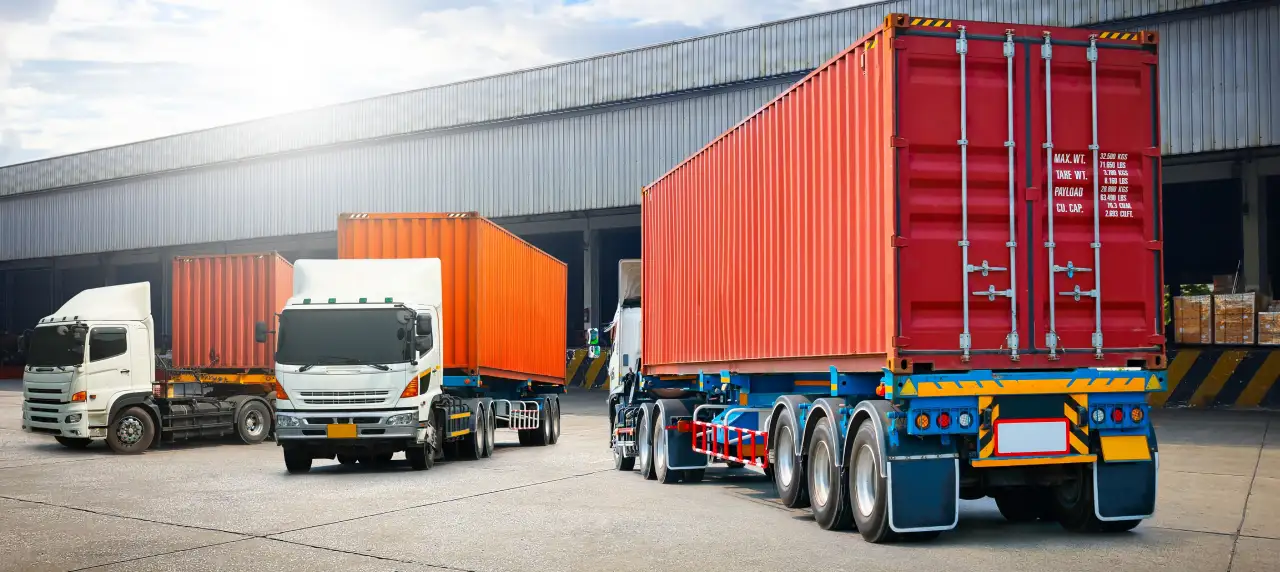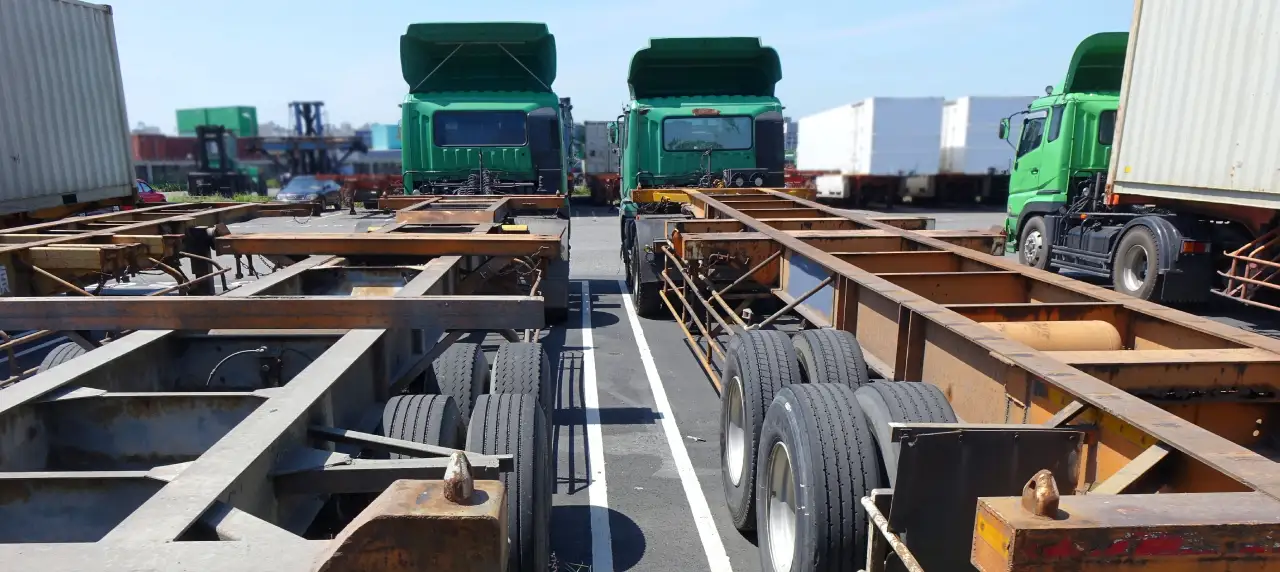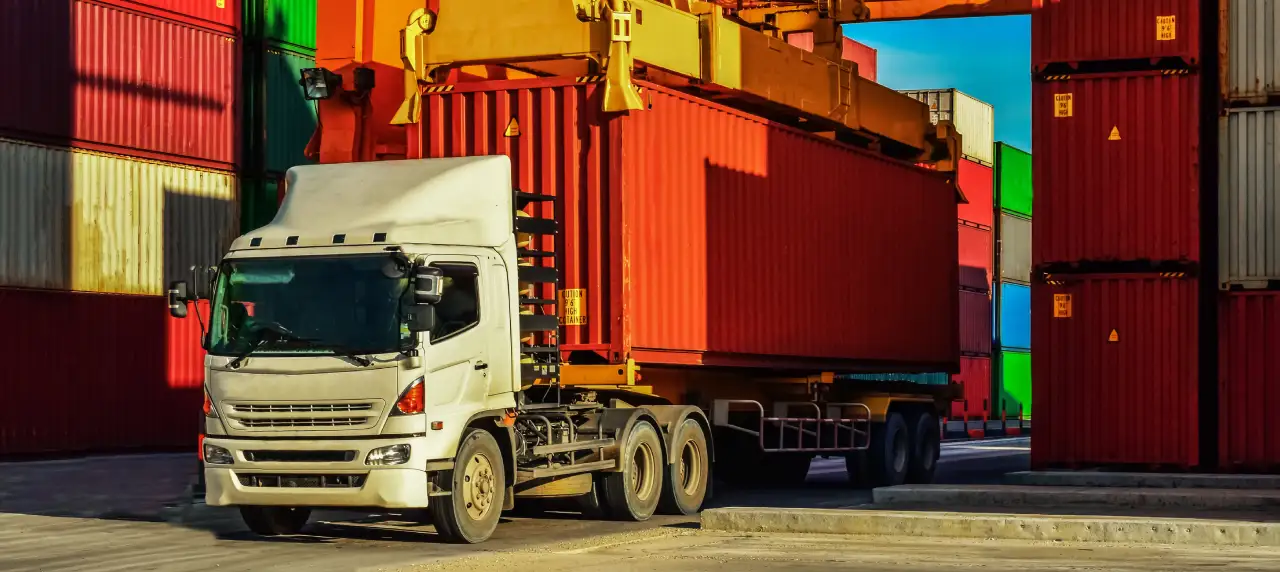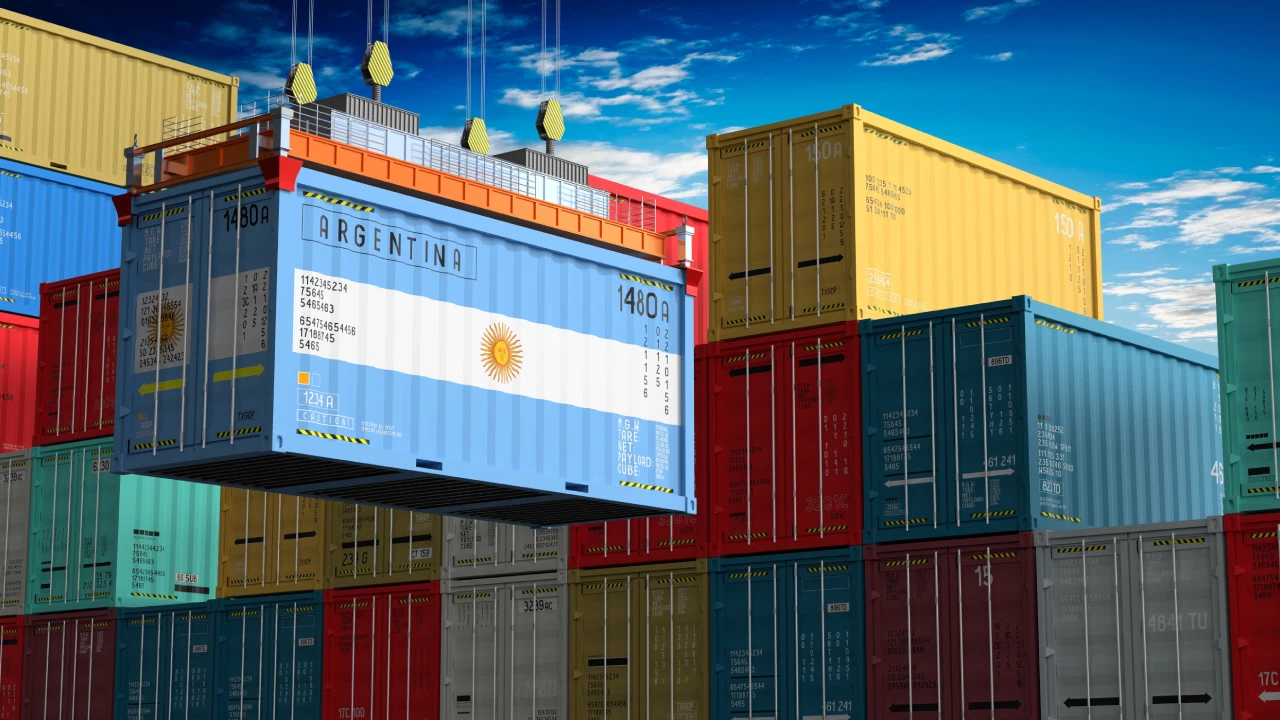
Key Takeaways
- Drayage trucking refers to the short-distance transportation of shipping containers between ports, rail yards, warehouses, and distribution centers
- It is classified into several types, including expedited, inter-carrier, intra-carrier, pier trucking, shuttle trucking, and door-to-door delivery
- Drayage operations rely on specialized equipment like container chassis and various container types
- Container drayage rates depend on weight, distance, equipment type, fuel prices, and additional fees like congestion charges, yard-pull fees, and special handling costs
Drayage trucking represents a large industry, with the Intermodal Association of North America (IANA) reporting over 60 million shipments handled every year. This impressive volume highlights its essential function in keeping global commerce flowing smoothly.
This article will explore the meaning of drayage trucking, its different types, the equipment used, how rates are calculated, and the challenges the industry faces today.
Navigating global shipping regulations can be complex, but Atlantic Project Cargo simplifies it. With specialized drayage services, we guarantee that your cargo arrives on time anywhere in the world.
Get a Free Drayage Estimate in Seconds!
What is Drayage Trucking?

The word drayage comes from “dray” — a horse-drawn cart used in the past to transport heavy freight. Drayage trucks have since replaced horses, the term now refers to short-distance ground freight transportation.
Meaning of Drayage
Drayage is commonly used in intermodal transport. Unlike regional or national shipping, intermodal container drayage typically involves short-distance hauls, sometimes as little as 100 feet (30 meters), between seaports, warehouses, railyards, and distribution centers. Most deliveries are completed within the same metropolitan area, rarely traveling more than a few miles.
Container drayage is a crucial link in the supply chain, ensuring smooth transitions between different shipping methods.
What is a Drayage Truck?
Drayage trucks, also called port trucks, are used for the short-distance transportation of goods. They are equipped with specialized chassis to transport shipping containers. These trucks are commonly used in drayage transportation, moving freight between ports, rail yards, distribution centers, and warehouses.
Why is Drayage Trucking Important?
Imagine ports overloaded with containers, trains full of undelivered goods, and warehouses waiting for shipments that never arrive. That is what would happen without drayage trucking.
Drayage serves as the critical connector in intermodal shipping, bridging the gaps between shipping hubs. The drayage truckers do not just transport freight — they keep the supply chain moving smoothly.
Drayage vs. Intermodal Transportation
Drayage and intermodal transportation are closely related but serve different purposes in logistics.
As we mentioned above, drayage refers to short-distance transport using drayage trucks. Intermodal transport, on the other hand, is about long-distance shipping that involves multiple transportation modes, like ships, trains, and trucks, without unloading the cargo from its trucking container.
Port drayage is a part of intermodal transport. For example, when a container arrives at a port by ship, a truck moves it to a rail yard, where it continues its journey by train. Then, another truck might transport it from the rail yard to its final destination.
Drayage Trucking Types
Drayage trucking is categorized based on how goods need to be transported. According to the Intermodal Association of North America (IANA), the main classifications include:
- Expedited
For time-sensitive shipments like food products that require fast delivery - Inter-carrier
When goods are transferred between different carriers, such as moving a load from a warehouse to a nearby rail terminal - Intra-carrier
When shipments are transported between freight hubs owned by the same carrier - Pier Trucking
When cargo is moved from a terminal or hub to a port, harbor, or pier via road transport - Shuttle Trucking
When freight is temporarily moved to a warehouse or holding location before continuing its journey - Door-to-Door
When goods are delivered directly to the customer
Equipment Used for Port Trucking

Since drayage involves specialized cargo handling, truck drivers use specific equipment to haul containers safely and efficiently. The equipment used in drayage trucking is called container chassis or intermodal chassis.
Standard (Fixed)
This is a basic trailer designed for 20ft or 40ft container transport. Its simple, fixed-frame structure allows an efficient container movement from one location to another. This is cost-effective and user-friendly, making it a popular choice for everyday drayage operations.
Overhead cranes are typically required for loading and unloading cargo onto this type of chassis.
Tilt
The tilt container chassis features special mechanisms that simplify cargo handling. Its design includes:
- Upper and lower frames for stability
- A hydraulic system that tilts the container upward
- Rollers connecting both frames for smooth operation
This setup ensures secure and efficient loading and unloading, especially for bulk materials like granules. While this specialized chassis comes at a higher cost, it is an excellent investment for businesses prioritizing speed, convenience, and reduced equipment dependency.
Extendable
Its adjustable rear section allows moving shipping containers of varying lengths. This design distinguishes it from standard fixed-length chassis, providing operational flexibility in intermodal transportation.
Key features and benefits include:
- Adjustable frame extends or retracts to securely transport 20ft, 40ft, 45ft, and 53ft containers
- Eliminates the need for multiple chassis types, reducing equipment requirements
- Maintains compatibility with standard container handling systems
- Ideal for long-distance transport across state lines and international borders
This chassis type is suitable for logistics operations that handle diverse container sizes, offering a practical solution to optimize equipment utilization.
Drayage Container Types
Most drayage containers range from 6 to 8 feet in height and come in standard lengths of 10, 20, or 40 feet, depending on the type of cargo. Their standardized sizes make loading, unloading, and transporting goods across different shipping methods more efficient.
Drayage containers are typically made of aluminum or steel and come in several types:
- Dry (Standard)
The most common type used for general cargo. Available in multiple lengths - Flat Rack
Features collapsible sides, making them ideal for oversized or heavy loads - High Cube
Taller than standard containers, reaching 9 feet, 6 inches for extra storage capacity - Open Top
Has no solid roof, allowing for easier loading of tall or heavy cargo, often covered with a tarp - Refrigerated (Reefer)
Equipped with temperature controls to maintain a stable environment for perishable goods

How are Container Drayage Rates Calculated?
Drayage rates depend on various factors, such as:
- Weight and Size
Heavier drayage loads require more resources to move and take more time, so they will cost more - Equipment Type
Standard trailers cost less, while special equipment costs more - Distance
Longer trips mean higher costs since pricing is often per mile - Fuel Prices
Some companies add a fuel surcharge, which can change depending on fuel prices - Peak Season
Shipments during busy seasons, weekends, or holidays are typically higher due to increased demand and operational complexities
The following accessorial charges influence the total cost:
- Drop Fee
Applied when a truck delivers a container to a warehouse but retrieves the empty container later instead of unloading it immediately - Congestion Fee
Imposed when port or terminal congestion increases cargo handling time - Yard Pull (Pre-Pull) Fees
Imposed when a container is moved from a port to a warehouse before final delivery - Special Handling Charges
Extra fees for hazardous, refrigerated, or overweight freight requiring special equipment or handling
To calculate the cost easily, use our free drayage rate calculator and get an instant quote!
Choosing the Right Drayage Shipping Company
Selecting the best company among various drayage carriers requires careful consideration of several key factors:
- Service Coverage and Locations
Ensure the company operates in the regions and ports where you need drayage services. Verify their network of terminals, rail yards, and intermodal connections - Experience with Your Freight Type
Different goods have unique handling requirements. Ensure the company has expertise in transporting your specific type of cargo. If shipping high-value goods, verify that they offer adequate insurance coverage for potential loss or damage - Fleet and Equipment
Check if they have the right equipment (chassis, container types, refrigerated units, etc.) to handle your freight. Ensure they use modern, well-maintained trucks that comply with environmental regulations - Compliance and Certifications
Confirm they meet regulatory requirements such as FMCSA (Federal Motor Carrier Safety Administration) and local laws - Price Transparency
A company should provide detailed drayage quotes without any hidden fees like fuel surcharges, drayage accessorial charges, storage, or demurrage fees
Atlantic Project Cargo takes care of all the issues with shipping across borders. Due to our drayage proficiency, your cargo is in expert hands, delivered safely and timely to its final destination.
Get a Free Quote!
Conclusion
The meaning of drayage in the shipping industry is great. Without efficient drayage logistics services, ports would face congestion, rail yards would overflow, and warehouses would struggle to receive shipments. As global trade continues to expand, drayage freight remains an essential part of the transportation network, keeping goods moving smoothly from ports to their final destinations. For businesses looking to optimize their logistics, choosing the right drayage partner is key to ensuring timely, cost-effective deliveries.
Strong December U.S. Container Imports Close 2024 but Potential Challenges Loom for 2025
Read More



